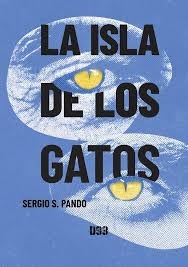
Original Language: Español
Year of publication: 2024
Valoración: BETWEEN OK AND RECOMMENDED
The Island of Cats It is the first Bilbao novel based in Madrid Sergio S. Pando and the truth is that, with its virtues and its defects, it constitutes an appreciable exercise of literary ambition.
With a high autobiographical content, we can say that the novel is a story of losers who do not lose hope, a text built from two separate plots in the time they serve to tour the history of this country in the last 100 years. And although it is sung that, in one way or another, those plots will end up converging, the important thing is how we reach that point. And there the author is well stopped.
Summarizing a lot, The Island of Cats It is the history of Julio, exiled after the civil war in New York, and Diego, a young man who lives in the Bilbao of the 80s (so disgusted in these times of Guggenheim, Gentrification and franchises). They are the years of lead, industrial reconversion, heroin and kids lying in the park (this has been seen by these eyes, yes) and Diego spends their days between discs, books, movies, petas and subjects of geography and history . So that then four fucking pozuelo de Alarcón pozuelo came to talk about “youth without a future”! In the end.
I do not roll up and go to comment on the main virtues and defects of the novel.
Among its most remarkable aspects, in the positive, are:
- Ambition. I do not speak of “formal” ambition since in that sense in a more or less conventional novel, if we except chapter 15 of the first part, which is the riskiest formal (a promising and different path that I would have liked to follow) . I mean, above all, that daring to put everything in the novel, not to cut, to touch several sticks. It can go well, bad or regular (and I think, in general, it goes well), but I like the author to assume the risk.
- Setting We speak in family scenarios for me and I think those scenarios are well reflected in the novel. Atmosphere, context, vacuum sensation are seen throughout the Bilbao part of the novel.
- Voices It looks like a asshole but it is not. How many novels do not fall because the characters speak all in the same way? Two characters so far from each other, despite obvious parallels, such as Diego and Julio cannot speak the same, it would be absurd, and I like how the author has worked with the literary language, with the speech of the characters and with the different records that these these They handle.
- Main characters. Well built, with their pass and their contexts, with their contradictions in tow.
In the not so positive it is worth mentioning:
- Personal interference. The author has a degree in geography and history and that looks very clear in the novel. In itself it would not be a problem, but it gives me the impression that there are times when it penetrates too evident (and even unnecessary) in the text.
- Linked in part to the above, sometimes the discursive / didactic is entrued into the purely novelistic. I know that it offers context to action, but sometimes you have to let the reader seek life.
- Reiterations, especially in the New York part of the novel and the height of page 250. It is curious because it is when the years pass faster when the novel loses some of the good rhythm it has.
In spite of everything, I am left with the good and the feeling that, polishing some defects, there is wood here (and not that of the La Salve barracks)
Source: https://unlibroaldia.blogspot.com/2025/02/sergio-s-pando-la-isla-de-los-gatos.html


